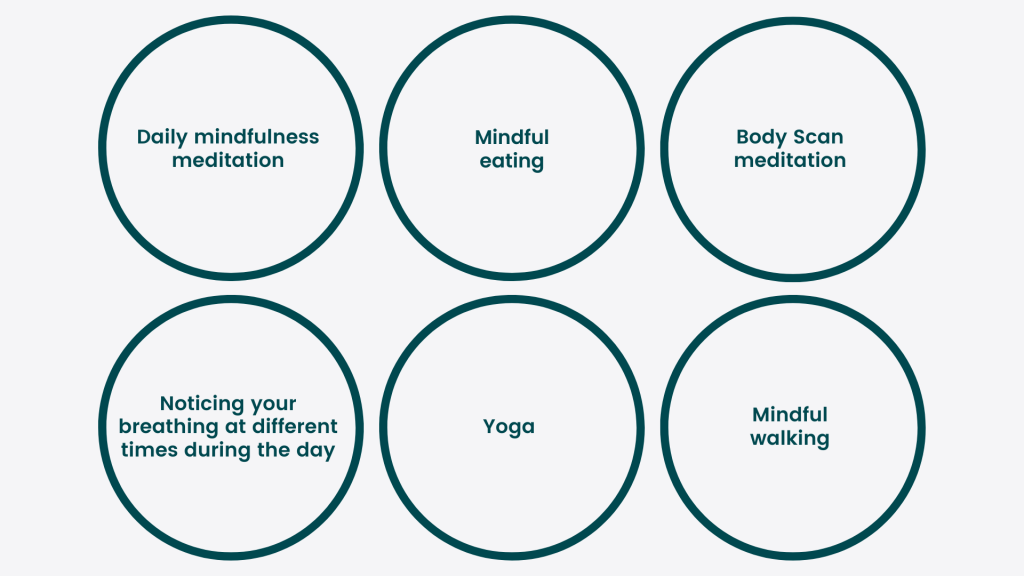Introduction to a Mindfulness Practice

What is mindfulness and how is it connected to eating and cooking
In this course, you will learn the basic concepts of mindfulness and mindful eating. Using mindfulness in your life is one way to help support yourself and those around you, as mindfulness promotes balance, choice, wisdom and acceptance. Mindfulness can have a positive affect on physical health by improving immune function, stress response, sleep, and blood pressure. It also provides an opportunity to be extra kind to yourselves.
Mindfulness practices can help increase awareness of how you feel, how you observe and how you respond to the environment around you. In this course, you’ll learn that as you go through your day, there are many opportunities for you to bring an open awareness to each activity you do, including how you come into the kitchen. In addition to the meditation that is attached to the mindfulness lesson, each week there will be a guided meditation before the Cook with Us activity. This is meant to calm and bring you into a new place to observe and learn while we practice skills in the kitchen.
Mindfulness is:
- being aware of what is present for you mentally, emotionally, physically
- paying attention, on purpose, to the present moment, non-judgmentally
This definition is by Jon Kabat-Zinn, the founding director of the Center for Mindfulness in Medicine, Health Care and Society at the University of Massachusetts as well as the founder of mindfulness-based stress reduction (MBSR).
Mindfulness and this course
As you build your nutrition knowledge and culinary skills, you may be asked to prepare and eat foods that are new to you. This may bring up many feelings. Building a practice of mindfulness will help to support your experience allowing you to be present and savor these moments. If at any time you feel you need more support, you can use one of the exercises provided in this unit—or future units—to return to a state of calm.
What does a mindfulness practice look like?
A mindfulness practice is training your mind to consistently bring awareness to your body in the present moment.
You can start by finding time in your day to establish a simple practice. This could be five or ten minutes when you first wake up in the morning or before going to bed. It could also be pausing before you start to eat during the day. A regular practice of mindfulness involves having a planned and consistent mindful activity as part of your regular routine.
Examples of this include:

We will introduce you to the first four of these over the next six units.
What are the benefits?
There are many possible benefits of having a mindfulness practice including overall improvement in quality of life and support with building healthy habits. Other possible benefits include:
- Lower levels of depression and anxiety
- Lower blood pressure
- Improved sleep
- Help coping with pain
- Improved fatigue
- Healthier immune function
- Neuroplasticity (allowing the brain to “re-wire” itself)
You can add to this list with the benefits of cooking more and having the confidence to make healthy food choices. By following the activities in each unit, you are building a routine that is sustainable for years to come.
In a study observing lengths of time spent in mindfulness-based practices, it was observed that even short practices of five to ten minutes, practiced with regularity, were beneficial in helping to reduce stress and anxiety. (Strohmaier 2020)
While this course isn’t a mindfulness program, each unit will introduce you to some basic skills you can use and build on.
The next activity is going to take you through a mindfulness practice called Body and Sound. You can come back to this practice as many times as you like and whenever it feels right.
The title, Body and Sound, refers to the practice of focusing the mind on relaxing the body and noticing the sounds around us. This can be a way to anchor the mind to the present moment and can bring about a sense of calm and well-being


